wealth inequality in america among Hispanic community
More and more Americans are becoming aware that unequal wealth redistribution is a fact of life for the average Hispanic living in America. The good news is that there are steps we can take collectively and as individuals to reduce inequality and increase wealth for the Hispanic community.
“Without Change, African American and Latino Families Won’t Match White Wealth for Centuries” explain the authors of The Ever-Growing Gap, a study of inequality by CFED & Institute for Policy Studies. “We showed that if current trends continue, for the average Latino family, matching the wealth of White families own today will take 84 years”.
The average Latino family has less money than a White family. “White American households own … 68 times more than Latino households,” writes Rodney Foxworth writing in Chronicle of Philanthropy.
To understand the current system of unequal wealth redistribution and how it can be ameliorated, we first need to understand the causes.
what are the causes of the wealth inequality for the Hispanics
1. lower access to a solid Education System
One of the primary drivers of the racial wealth gap in America is the education system. The American education system relies on local taxes for funding. More affluent towns and cities have residents who make more money and pay higher taxes.
With more money from their citizens, they have more money to invest in education; paying teachers competitive salaries, keeping class size down, college preparation courses, additional support for those who need it, etc.
As a result, we can see that Latinos have less access to a solid education and experiencing more discrimination at school
According to the report published by NCLR (national council of la Raza)
“there are still significant educational and academic disparities between Latino and other students that begin in the early years, persist through high school and impact college readiness. “
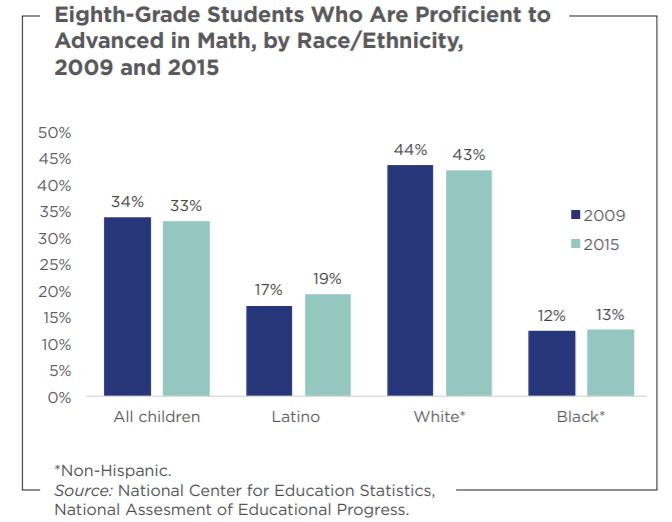
Wealthier people are also more able to move if they are unhappy with the local school system. This puts towns in the position of competing for a better school system. Like so many aspects of life in America, those with the most money get the best results.
Not only are Hispanics more likely to live in neighborhoods with worse schools, even when they have access to a better school they are often denied the opportunity to attend.
In a New York Times expose of minority enrollment at New York City’s most selective public high schools, Eliza Shapiro found that “Though black and Hispanic students make up nearly 70 percent of New York City’s public school system as a whole, just over 10 percent of students admitted into the city’s eight specialized high schools were black or Hispanic.”
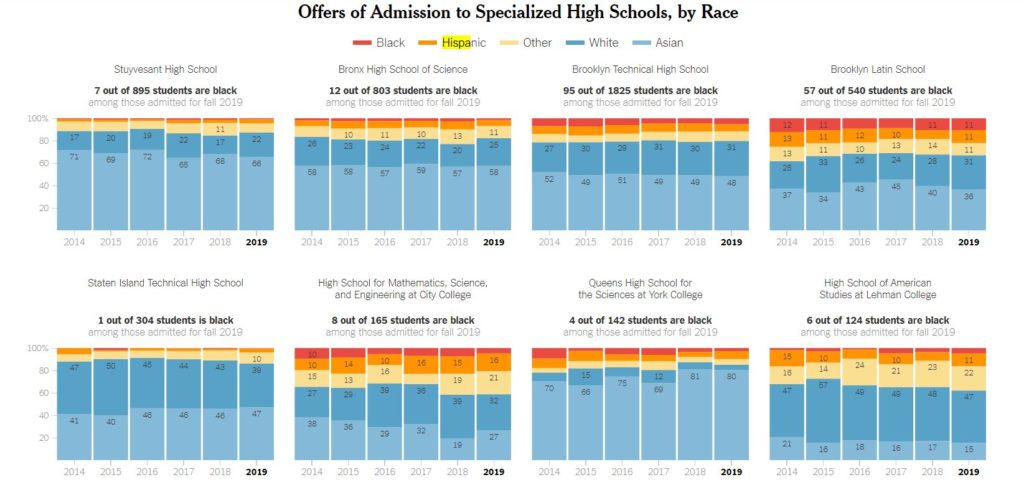
2. financial illiteracy
Another major reason why Hispanics have less money is because they are less financially literate.
The education system’s overall failure to impact basic concepts like interest and credit has been brought up before, but it’s worse for black and brown students.
One of the results of Hispanics being less financially literate is that they are less likely to invest in a manner that will help their money grow over time.
According to Social Security Administration researcher Sharmila Choudhury, Latinos and other minorities don’t invest in assets that are likelier to result in a bigger return. “At every income quartile and education level, minority households are less likely than white households to own a wide variety of assets–particularly riskier, higher-yielding assets.”
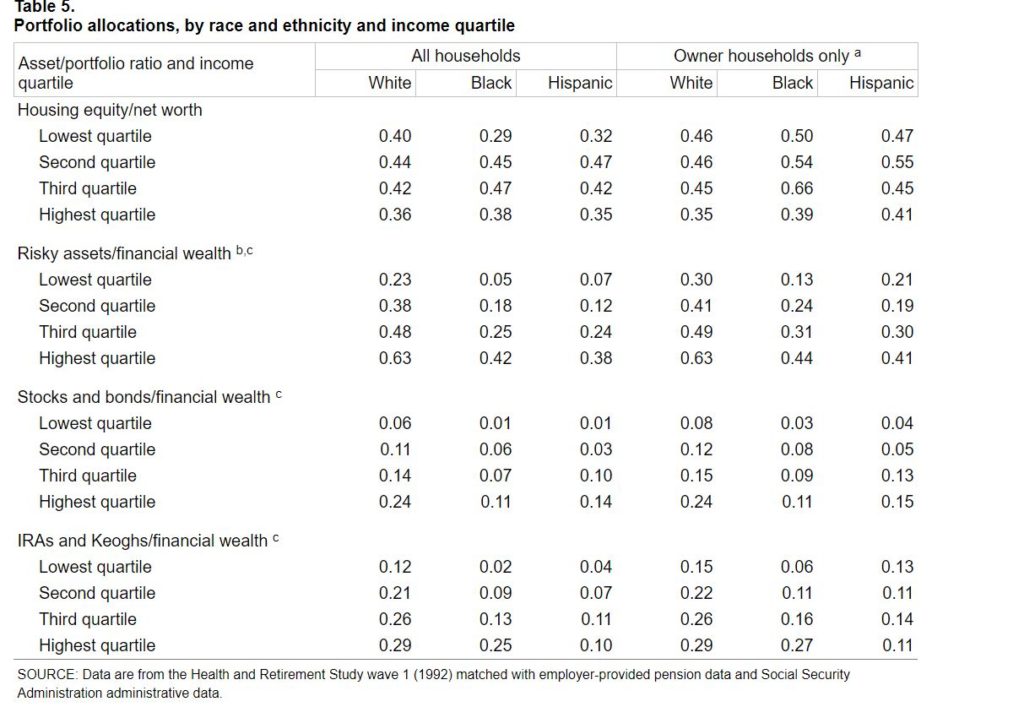
3. The Banking system & denial loan rates
The banking system plays a role in inequality. Because there is less money to be made in poor communities, the big banks haven’t made providing access to banking services for minorities a priority.
As a result, many residents in poor areas don’t have access to, or feel unwelcome in, a traditional bank. Instead, they use check-cashing services that charge fees or rely on payday lenders who often charge exorbitant rates, which can quickly eat away at their earnings.
Not only are Latinos less likely to live near a bank, when they do visit a bank they can be discriminated against.
And it’s not just individuals that are discriminated against, but small business owners as well. According to The Federal Reserve’s analysis of the availability of credit to small businesses “Hispanic-owned firms were more likely than any racial category to have applied and also experienced elevated denial rates.”
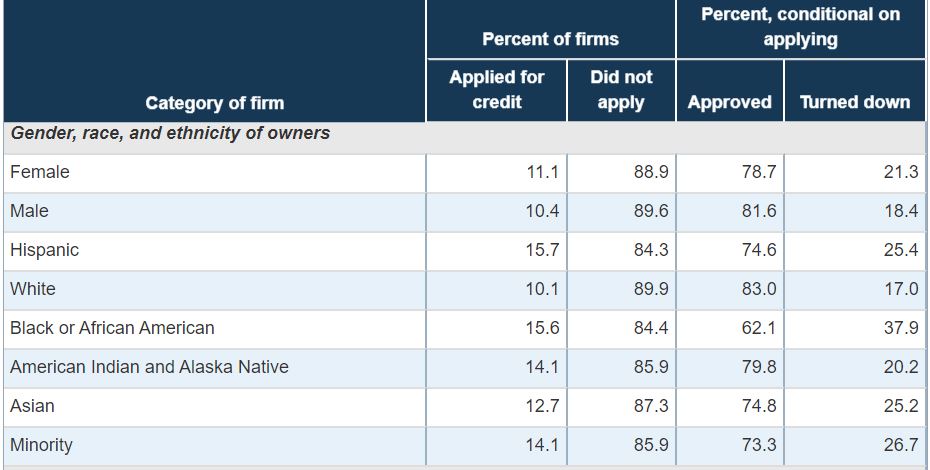
4. Over-representation in working class jobs
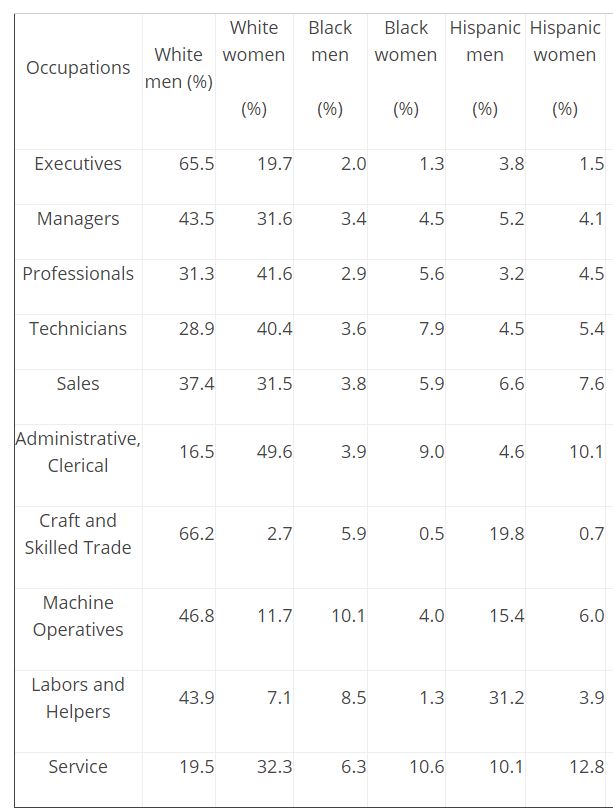
And of course, a main reason Hispanics have less money is because they make less money in the first place.
“Hispanic men working full time made 14.9% less in hourly wages in 2016 compared to white men (compared to 17.8% in 2000) and Hispanic women made 33.1% less than white counterparts (compared to 35.1% in 2000)” says Kari Paul writing in Market Watch.
One of the reasons Hispanics are paid less than Whites is because they hold fewer managerial positions and tend to be employed in labor-intensive professions.
“Hispanic men and women are underrepresented in professional jobs in all states,” write Donald Tomaskovic-Devey and Eric Hoyt in their report “Race, States, and the Mixed Fate of White Men” for the Center for Employment Equity at Umass. Even in baseball, a sport where Latinos make up about 30 percent of MLB players, they make up less than five percent of head coaching or general manager positions.
How to Reduce wealth gap for the Hispanic community?
Because wealth inequality is so entrenched, it won’t be easy to fix. With a problem as intractable as racial wealth gap, there isn’t a “silver bullet” that can erase a problem centuries in the making.
The good news is that in part as a response to the Black Lives Matter movement there has been increased urgency in the fight to ensure equality.
Here are a few of the most important steps to take to reduce inequality for Hispanics.
1. Personal Wealth Management for Hispanics
In addition to improving the education system overall, there should be a greater focus on financial education and money management. Students should be taught the basics of interest and credit, budgeting, credit card fees, investing, and managing finances in general.
One avenue for increasing the wealth of Latinos is for them to work with a wealth coach to assist them with their finances. A wealth coach works with an individual to understand their current financial situation, plan short and long-term financial goals, and helps secure a solid financial future.
We provide information and guidance about personal wealth management for minorities and our wealth coaches will be more than happy to support you.
Too many financial institutions rely on exploiting the ignorance of people of color to inflate their profits. By better understanding how the financial system works, Hispanics can grow their net worth sustainably over the long haul.
2. Community Banking within the Latino community

Financial professionals are attempting to address issues of access to banking by supporting Community Development Financial Institutions (CDFIs).
As the Opportunity Finance Network, the national association of (CDFIs), explains, CDFIs are “private financial institutions that are 100% dedicated to delivering responsible, affordable lending to help low-income, low-wealth, and other disadvantaged people and communities join the economic mainstream.”
By serving individuals that have been left out of the banking system by the big banks, CDFIs provide poorer residents the ability to access checking and savings accounts, consult with a banking professional, access to loans and more.
3. Pushing for equal pay and chances to managerial positions
Businesses have the resources to significantly improve economic inequality. And there is some evidence that businesses are increasingly willing to put their resources to use helping to combat societal ills like inequality.
In August of 2019, The Business Roundtable, a group of CEOs of some of the countries largest companies, signed a statement saying that “companies should serve not only their shareholders, but also deliver value to their customers, invest in employees, deal fairly with suppliers and support the communities in which they operate.”
And in June of 2020, the group announced the formation of the Special Committee to Advance Racial Equity and Justice “to advance racial equity and justice solutions.”
Many companies are putting fighting inequality as a stated mission. In one example, Citibank pledged more than $1 billion to help close the racial wealth gap. Many other companies have announced similar campaigns.
Time will tell if these have any lasting impact or are simple marketing stunts. But the fact that corporations are even talking about their role in fighting for equality is a good sign.
Two areas are particularly relevant in the world of business
● Equal pay – Closing the pay gap is important to get rid of inequality. If we want to reach a point where Hispanics have as much money as White’s they need to be paid fairly.
● Management positions – And in order to increase the average wage of Hispanic workers, they must make up a larger percentage of managerial and executive positions. Companies should make it a point not only to hire more qualified minority candidates but ensure they can climb the corporate ladder as successfully as their White counterparts
Conclusion
Unfortunately, inequality is a fact of life for far too many Hispanic families today. But all is not lost. The racial wealth gap won’t disappear overnight, but there are avenues for making progress.
There are several steps we can take, both at the individual and collective level, to reduce racial wealth inequality. Making lasting change starts with individual action and with Hispanics taking control of their financial future.
For individuals, working with a wealth coach can be the first step to charting a path to a bright financial future.
